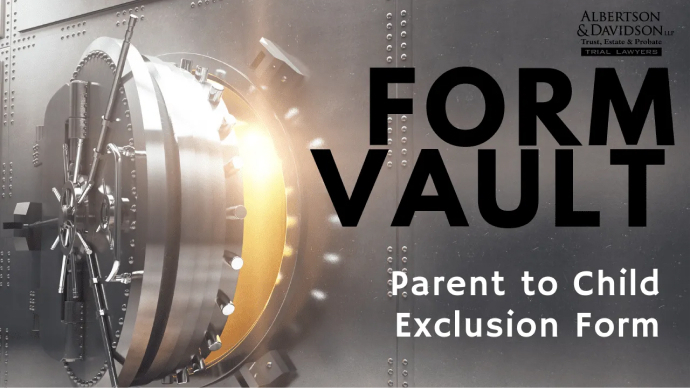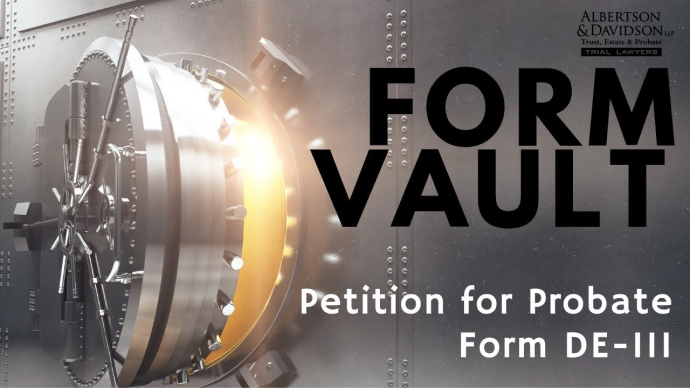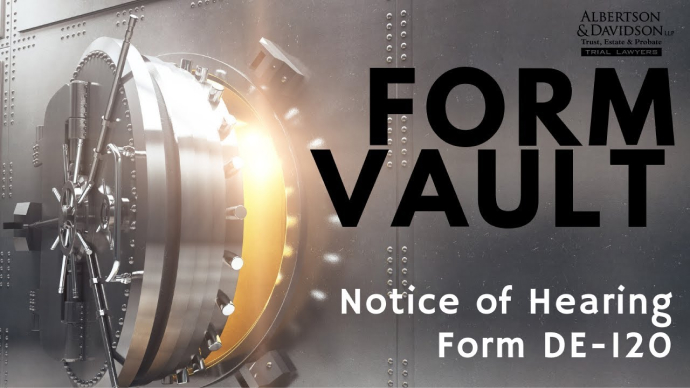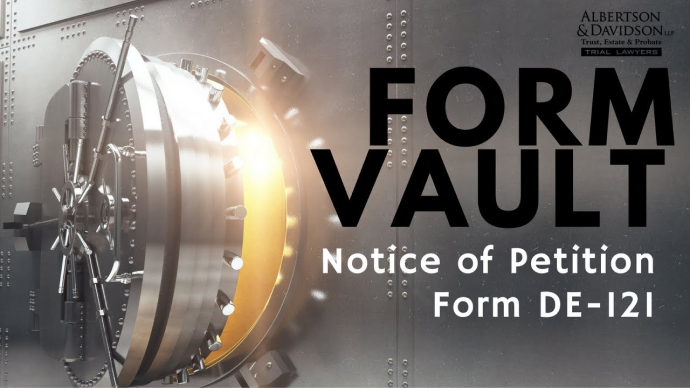Today we are going to be filling out The Claim for Reassessment Exclusion for a Transfer Between Parent to Child. You would be filling out this form if you are going to be receiving a property – a real property or a qualifying property from your parents, either during their lifetime or as a result of their passing through a Will, a Trust, or some medium like that.
California Parent to Child Exclusion Form
So let’s go ahead and get started, the first information that you’re going to be filling out is in this top left box, and this is going to be your information. So if you’re the one receiving this property, you would fill out your name and your address. Next, in Section A, this is where you fill out the information for the real property that you’re going to be receiving. The top box right here is the APN or the Assessor’s Parcel Number. You find this on the deed. So you go ahead and you go to the deed and make sure you type in this information exactly as you see it, including the spaces.
Below that, you would fill in the information for the address of the real property including the city, and under this box here, Recorder’s Document Number. If you’ve already recorded the deed and you’ve received it back, you can go ahead and put the Recorder’s Document Number here and the date it was recorded. If there’s a probate that’s open, you put the probate case number on the left hand side. This box in the middle, now this is the date of death if you’re receiving this property as a beneficial interest under a probate or a beneficial interest under a Trust, you would put the date of death of your parent right here. If you do have a court order to order the distribution, then you would put the date of decree or distribution on the right hand side.
Who is Transferring the Property?
Now Section B applies to who is transferring the property. For our hypothetical, we’re going to say that this property is being transferred to our client who is a beneficiary under a family trust, and we’re going to say that her brother is the Trustee of that Trust. And again we’re going to us a father-stepmother situation. We’re going to say that the father predeceased the stepmother, and stepmother just passed on January 9th, 2017. So under Section B, the first thing you fill out is who is making that transfer. For our purposes, it’s the Trustee because they are the current owner of the property. So John Smith Trustee, if it’s a lifetime transfer or as a result of the Probate and it’s parents, you can go ahead and fill in both parents’ name right here. Below that, because again this is a Trust, we’re going to be filling in the EIN, not the Social Security Number, but the EIN you can get this from your Trustee. If it’s a transfer from parents, then you’d put the parents’ Personal Social Security Numbers in each of these boxes right here.
Under paragraph 3, that’s where you identify the relationships of the transfer to the transferees. So for example on the left hand side, we’re going to say, “okay, our father owned this property along with our stepmother,” on the right hand side.
Under 4, you let the Assessor know if this was their parents’ principal resident, and we’re going to say yes for our example, this was the family home. You could take a look at this other information it’s asking, this doesn’t apply to our example, but if it does apply to you, go ahead and check those boxes. Under 5, they want to know whether there have been other transfers that qualify for this exclusion. For our purposes – no, there have not, this is the only transfer that is being made. Under 6, they want to know if this is the whole interest that is being transferred or just a partial interest. Again for our purposes, no, the whole property is being transferred. If that doesn’t apply to you, you can check yes and identify which percentage of the property is being transferred. Under 7, they want to know if the property is owned in joint tenancy, because the property in our example is owned by a Trust, you’re just going to click no. And please know that under 8, they want to call to your attention that if you are receiving this property as a result of a beneficiary under a Will or a Trust, you need to include that entire document along with this form so that they can determine that yes, this is a parent-child transfer and it does qualify for this exclusion.
Transferor Certification and Beneficiary Information
Below, that is a certification. So this is where the transferor fills out his information or her information, in this section right here, our transferor which is the Trustee would sign on the left hand side. This would also apply if this was a Probate and there was a personal representative, this would be the personal representative’s information or future parents, this is where the parents fills in their information.
Under C, now this is your information, that you’re receiving this property, so you’ll put your name, and then again you need to identify what the relationship is to the prior beneficiaries or owners. So again, daughter and stepdaughter. If you are adopted, you need to put the age at what you were adopted because certain age restrictions apply.
This section under 2, right below the adoption section, this applies to our hypothetical because we’re saying that the surviving parent was a stepmother. So they want to know if the parent was still married at the time of this transfer, and we’re going to say no, they were not because a death occurred. And so again, that’s where you fill in this next box and tell them why the marriage was terminated, and so we’re going to say – well, father predeceased stepmother, so the marriage was terminated by death. And you check that box. And then they want to know, okay well, there is a death, has that survivor remarried, if it was a step-parent, and for our purposes, we’re going to say no, that the stepmother never remarried. Same thing for in-laws, this section right below this, these 3 paragraphs, would apply if it’s an in-law situation, it’s the same thing. If that applies to you, go ahead and fill that out.
And finally we come down here to certification, and again this is your information, so you’re the transferee, you sign your name right here, you print your name in the middle, and you would date it. And also put your address and your telephone number, as well as your email.




